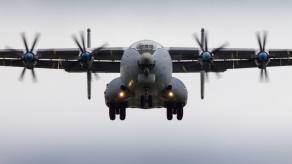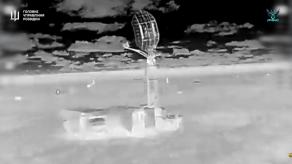The representative of Tavria operational-strategic group Dmytro Likhoviy reported about the strike on russian Ulybka radar on the air of the national telethon.
"On a separate note, I would like to mention a very rare 'bird'. RPMK-1 Ulybka weather radar for radiosonde observation is a type of radar that allows the enemy use data to determine the correction of the trajectory of ballistic objects, that is, artillery and missiles through balloons and other devices that launch probes," he stated.
Read more: CinC of Ukraine's Forces Syrskii Releases Statistics on Missiles and Drones usage by russians, Number of Destroyed Threats
RPMK-1 Ulybka is a weather radar for radiosonde observation. The antenna uses the principle of conical scan. The high frequency is fed to the antenna by using of matched rigid coaxial lines.

Ulybka measures wind direction and speed, relative humidity, temperature and pressure. This data is collected by radiosondes — small instrumentation packages that emit radio signals — carried aloft by balloons. The wind speed and direction can also be determined if necessary by tracking the balloons with the system’s radar. The radar may operate either active, or as passive direction finder. The collected data is used for gunnery, launching of missile and multiple rocket systems; calculation of contamination areas; weather forecast; aviation flight support.
The RPMK-1 set consists of the three components:
- 1B44-1: Ural-4320 with radar and other operational equipment,
- 1B44-2: Ural-4320 support vehicle with 8 kVA generator,
- 1B44-3: trailer that carries cylinders of hydrogen gas for the balloons.

The RPMK-1 Ulybka was delivered to the russian armed forces in 1990 and replaced the predecessor MRK-1 Shkval.
Earlier Defense Express reported that the Ukrainian Air Force had showed the AASM Hammer guided bomb launch.
Read more: Ukrainian Defenders Launch Successful Guided Bomb Strikes in Donetsk Region (Video)














